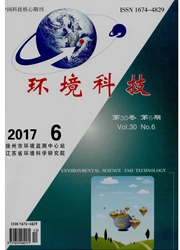

 中文摘要:
中文摘要:
基于国内外危险固体废弃物的利用及控制现状,对比分析了稳定化/固化、快速碳酸化、等离子体气化和超临界水氧化4种无害化处置技术的特征、处置范围和优缺点。稳定化/固化技术的处置成本低,增容比较大,广泛用于放射性物质的处置;快速碳酸化技术预处理过程较为繁琐,对控制处置后产物的重金属浸出具有明显效果;等离子气化技术投资大,对降低危废污染总量具有突出优势;超临界水氧化技术运营成本低,对具有长期潜在危险的难分解有机污染物处置效能显著。本文可为危险废物因地制宜、分类处置及健康有序发展提供工程技术借鉴,对扩展危险废物无害化处置的技术思路起到积极作用。
 英文摘要:
英文摘要:
Based on the utilization and control status of dangerous solid wastes at home and abroad, the characteristics, disposal scope, advantages and disadvantages of four kinds of harmless disposal technologies including stabilization / solidification, rapid carbonation, plasma gasification and supercritical water oxidation were compared and analyzed. Stabilization / solidification technology, low cost, large capacity, widely used in the disposal of radioactive materials; Rapid carbonation technology pretreatment process is more cumbersome to control the disposal of products after heavy metal leaching has obvious effect; plasma gasification technology investment is large, to reduce the pollution of the waste amount has a prominent advantage; supercfitieal water oxidation technology operation cost is low, the difficult to decompose the organic pollutants with long-term potential danger disposal efficiency significantly. This article could provide the engineering technology reference for hazardous waste according to local conditions, classified disposal and healthy and orderly development, and play a positive role in extending the technical thinking of harmless disposal of hazardous wastes.
 同期刊论文项目
同期刊论文项目
 同项目期刊论文
同项目期刊论文
 期刊信息
期刊信息
